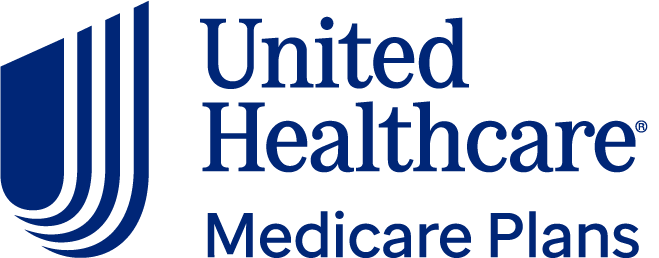Medicare vs. Medicaid: What’s the Difference?
Both Medicare and Medicaid cover health care. Medicare is mostly for people age 65 and older, and Medicaid is mostly for people with low income.

Many, or all, of the products featured on this page are from our advertising partners who compensate us when you take certain actions on our website or click to take an action on their website. However, this does not influence our evaluations. Our opinions are our own. Here is a list of our partners and here's how we make money.
Medicare is health insurance for people age 65 or older and younger people with certain disabilities. Medicaid is health insurance primarily for people with limited income. The rules for eligibility, costs and coverage vary between the programs. They’re both government programs, and they can overlap.
Here’s what you need to know about the differences between Medicare and Medicaid.
What's the difference between Medicare and Medicaid?
Medicare | Medicaid |
|---|---|
Eligibility: Based on age, open to people with certain disabilities. | Eligibility: Based on income, open to people with certain disabilities. |
Coverage: Covers inpatient and outpatient health care. You have the option to add on prescription drug coverage through Part D. | Coverage: Covers inpatient and outpatient health care. May offer more or different coverage for nursing homes, prescription drugs, transportation, dental, hearing and/or vision care. |
Cost: Premiums, copays, coinsurance and/or deductibles for certain parts. | Cost: Free or almost free. |
Enrollment: During certain enrollment periods. | Enrollment: Any time. |
The primary difference between Medicare and Medicaid is who they cover. Medicare covers people 65 and older. Medicaid covers people with limited income. Both programs also cover people with certain disabilities. It’s possible to have both Medicare and Medicaid at the same time.
What is Medicare?
Medicare is health insurance for people age 65 or older and individuals with certain disabilities. Medicare is run by the federal government, so it works the same everywhere in the U.S.
What is Medicaid?
Medicaid is a government assistance program that covers health care costs for people with low income and certain children, people with disabilities and pregnant people. Medicaid is run by both federal and state governments. This means details like cost, coverage and eligibility can vary from state to state.
Medicare vs. Medicaid: Coverage
Medicare coverage is standardized by the federal government. Medicaid coverage has to meet some federal standards but can vary by state.
Medicare
Medicare has four letter-named parts:
Medicare Part A covers inpatient health care at hospitals and similar facilities. It also covers hospice care and some home health services.
Medicare Part B covers preventive services like vaccines and screenings. It also covers medically necessary outpatient health care like doctor’s office visits.
Medicare Part C, or Medicare Advantage, is private health insurance that bundles Part A and Part B coverage. It usually includes prescription drug coverage and other extras, too. You can choose to buy a Medicare Advantage plan rather than using Medicare Part A and Part B.
Medicare Part D covers outpatient prescription drugs.
There’s also Medicare Supplement Insurance, or Medigap. This helps pay for certain out-of-pocket costs that come with Original Medicare.
» MORE: Medicare vs. Medicare Advantage
Medicaid
Some Medicaid benefits are federally required and always included. Every Medicaid program must cover:
Transportation.
Inpatient and outpatient hospital care.
Labs.
X-rays.
Certain screenings.
Physician services.
Family planning and home health services.
States have the option to cover other benefits. These include prescription drugs, clinic visits, dental care, vision care and therapies.
Shopping for Medicare plans? We have you covered.

4.1
CMS Star Rating
from UnitedHealthcare

4.19
CMS Star Rating
Medicare vs. Medicaid: Eligibility
Medicare eligibility is mostly based on age, while Medicaid eligibility is mostly based on income.
Medicare
Most people qualify for Medicare when they turn 65. Medicare also covers certain younger people with disabilities and specific diseases, including end-stage renal disease (kidney failure) and amyotrophic lateral sclerosis, also called ALS or Lou Gehrig’s disease.
There are no income limits for Medicare eligibility, but people with higher incomes might have to pay more for certain coverage.
Medicaid
Most people qualify for Medicaid based on income. The federal poverty level (FPL) is often used to determine eligibility. This is $15,650 for an individual or $32,150 for a four-person household in 2025.
Under the Affordable Care Act, most states have expanded Medicaid eligibility to people with incomes up to 133% of the federal poverty level (FPL). Because of the way this is calculated, it effectively comes out to 138% of the FPL. That’s $21,597 for an individual or $44,367 for a four-person household.
It may be harder to qualify for Medicaid in states that didn’t expand eligibility. Medicaid is available to all low-income families, but the definition of low-income varies by state. In some states, low-income adults without children may not qualify.
You can enter your information at healthcare.gov/lower-costs to see if you qualify in your state.
Medicare vs. Medicaid: Cost
Most of Medicare has premiums and cost-sharing requirements. Medicaid is generally free or very close to free.
Medicare
Different parts of Medicare have different costs:
Medicare Part A has no premiums for most people. There are copays, coinsurance and a deductible.
Medicare Part B has premiums for everyone. Most people pay $185 per month in 2025 ($202.90 in 2026). But beneficiaries with particularly high incomes pay higher adjusted amounts. There’s also a deductible and a 20% coinsurance for most services covered by Part B.
Medicare Advantage (Part C) plans each have their own premiums, deductibles, copays and coinsurance. Some plans do have $0 premiums. You’re still responsible for the Part B premium, too, unless your plan helps pay some or all of those costs.
Medicare Part D plans each have their own premiums, deductibles, copays and coinsurance. The average monthly premium is $38 in 2025 ($34.50 in 2026). Beneficiaries with particularly high incomes pay higher adjusted amounts.
» If you have concerns about affording Medicare Part D, look into Medicare Extra Help
Medicaid
Medicaid is generally free or low cost, depending on your state’s rules and how you qualify. Medicaid premiums and other out-of-pocket costs are also capped. The total for everyone in the household can’t exceed 5% of the family’s income.
You can’t be denied services if you can’t pay, but Medicaid will work to collect unpaid balances. This includes making claims against people’s assets after they die, unless they have a surviving spouse, a child under age 21, or a dependent child who is blind or has a disability.
Medicare vs. Medicaid: Dependent coverage
Medicare doesn’t cover dependents, but Medicaid covers children and certain other dependents.
Medicare
Medicare doesn't cover dependents. If a spouse or ex-spouse is eligible for coverage, they must get their own Medicare plan. Other dependents, including children, aren't covered.
Medicaid
Medicaid covers dependents. For example, children in households with income up to 133% of the FPL are eligible for Medicaid in every state. In most states, children can qualify with even higher income levels. Dependent individuals with certain disabilities are also included in the mandatory eligibility groups that every state Medicaid program must cover.
The Children’s Health Insurance Program (CHIP) is another government health insurance program. CHIP covers uninsured children in households that might not be able to afford private insurance but that make too much to qualify for Medicaid.
Like Medicaid, each state administers its own CHIP program. Eligibility rules and other details vary from state to state.
Medicaid and CHIP provide health insurance to over 37 million children.
You can find a state-by-state list of eligibility levels on Medicaid.gov for Medicaid and CHIP. You can also check with your state’s health department to find information on your state’s rules.
Who is eligible for both Medicare and Medicaid?
If you’re eligible for both Medicare and Medicaid, you can enroll and get coverage from both programs. Qualifying for both Medicare and Medicaid is called “dual eligibility.”
If you’re dual eligible, Medicare and Medicaid work together to cover your health care. When you seek care, Medicare pays out first. Medicaid can help pay remaining expenses like Medicare premiums, deductibles and copays. Medicaid can also pay for expenses that aren’t usually covered by Medicare, like nursing home and personal care services.
ON THIS PAGE
Compare Medigap plans
ON THIS PAGE






